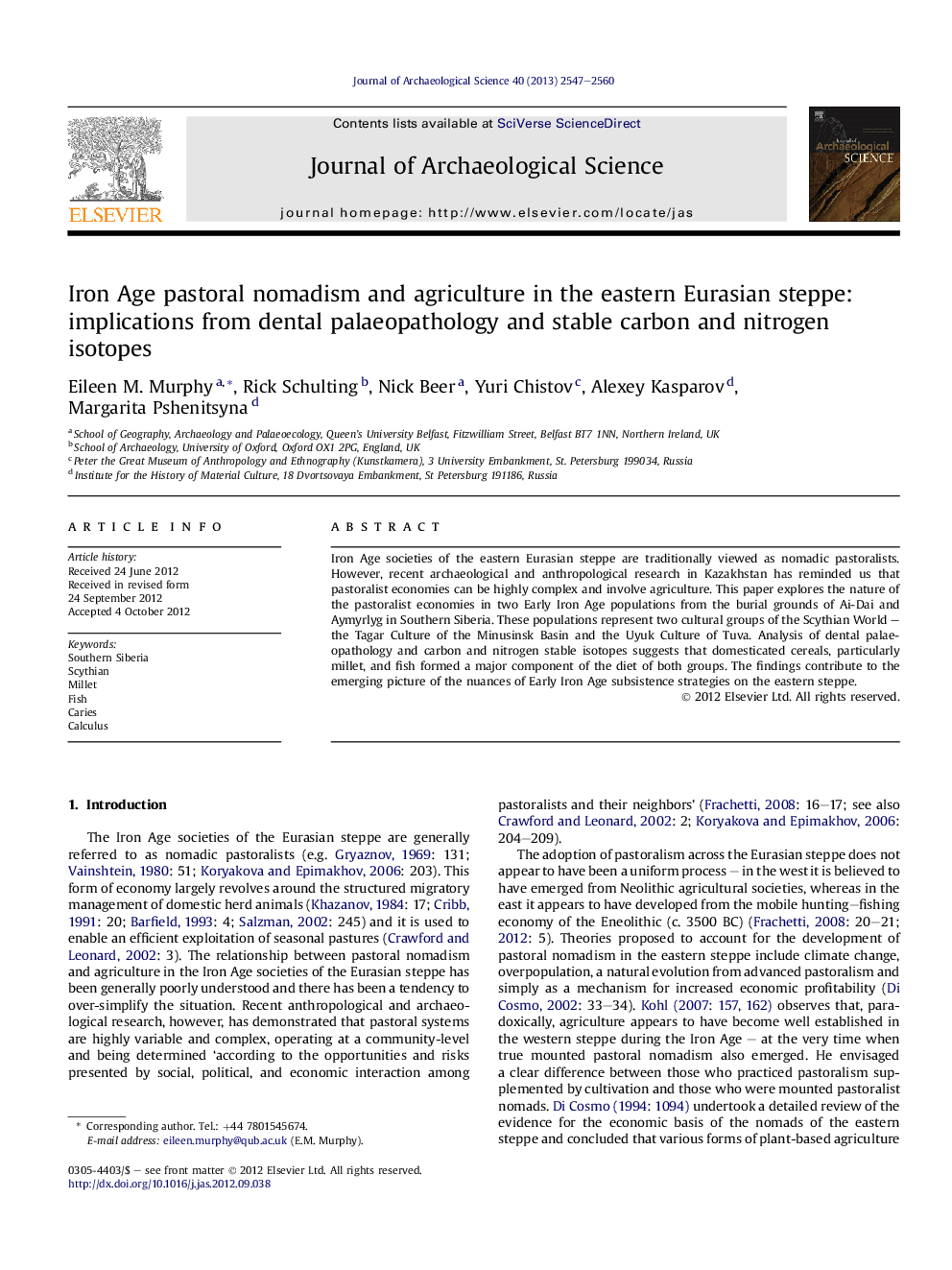| کد مقاله | کد نشریه | سال انتشار | مقاله انگلیسی | نسخه تمام متن |
|---|---|---|---|---|
| 1035568 | 943857 | 2013 | 14 صفحه PDF | دانلود رایگان |

Iron Age societies of the eastern Eurasian steppe are traditionally viewed as nomadic pastoralists. However, recent archaeological and anthropological research in Kazakhstan has reminded us that pastoralist economies can be highly complex and involve agriculture. This paper explores the nature of the pastoralist economies in two Early Iron Age populations from the burial grounds of Ai-Dai and Aymyrlyg in Southern Siberia. These populations represent two cultural groups of the Scythian World – the Tagar Culture of the Minusinsk Basin and the Uyuk Culture of Tuva. Analysis of dental palaeopathology and carbon and nitrogen stable isotopes suggests that domesticated cereals, particularly millet, and fish formed a major component of the diet of both groups. The findings contribute to the emerging picture of the nuances of Early Iron Age subsistence strategies on the eastern steppe.
► We examine the diet of two Iron Age populations from the eastern Eurasian steppe.
► The proxies used are dental palaeopathology and stable carbon and nitrogen isotopes.
► These populations did not solely rely on their herds for subsistence.
► Millet and fish formed a substantial component of their diet.
► The subsistence strategies of steppe mobile pastoralists are highly complex.
Journal: Journal of Archaeological Science - Volume 40, Issue 5, May 2013, Pages 2547–2560